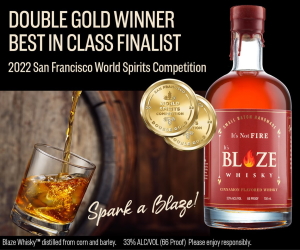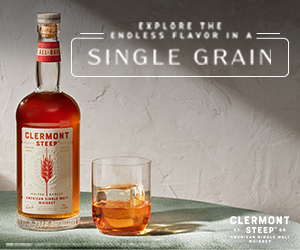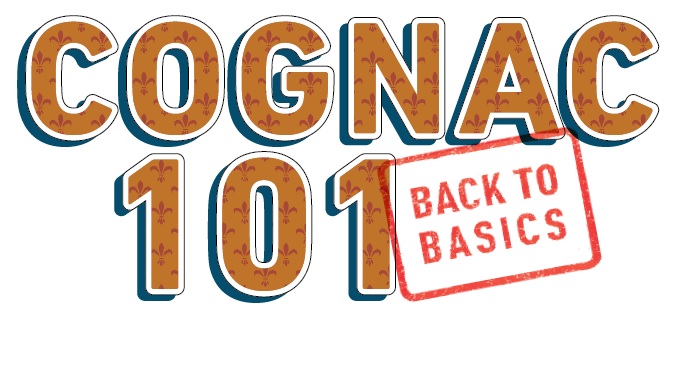
By Jeff Cioletti
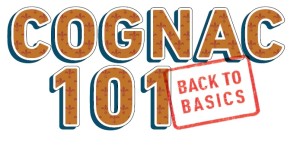 Brandy is the oldest of the distilled liquors; and Cognac is considered brandy’s highest expression. There’s probably no other spirit that is so tightly linked with France as Cognac—which is odd when you consider very few French people actually drink the stuff. The hugely popular brandy is popular just about everywhere but France, as only about 3% of all of the Cognac in the world is consumed in its home country. But that just means there’s more for everybody else, and it’s enjoying some impressive gains in the United States these days. Shipments of Cognac to the U.S. grew a solid 13.6% in 2015, with gains being led by the largest suppliers.
Brandy is the oldest of the distilled liquors; and Cognac is considered brandy’s highest expression. There’s probably no other spirit that is so tightly linked with France as Cognac—which is odd when you consider very few French people actually drink the stuff. The hugely popular brandy is popular just about everywhere but France, as only about 3% of all of the Cognac in the world is consumed in its home country. But that just means there’s more for everybody else, and it’s enjoying some impressive gains in the United States these days. Shipments of Cognac to the U.S. grew a solid 13.6% in 2015, with gains being led by the largest suppliers.
Where Is It Produced?
For a spirit to be called Cognac, it must be produced in the Cognac region, near the central-southwestern coast of France, covering only about 300 square miles. It’s an Appellation d’Origine Controlée (AOC), just as Champagne is an AOC for its namesake region.
Cognac Vs. Other Brandy
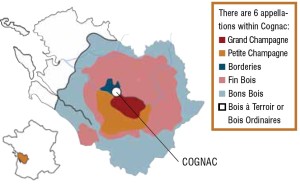 In the same way that all Champagne is sparkling wine, but not vice versa, all Cognac is brandy but not all brandy is Cognac. Both are considered eau-de-vie.
In the same way that all Champagne is sparkling wine, but not vice versa, all Cognac is brandy but not all brandy is Cognac. Both are considered eau-de-vie.- For many brandies, authorities don’t stipulate which parts of the grape must be used for their production (grappa, for instance, is made from pomace, the leftover pressed skins and seeds). Only the prime parts of the grape may be used in Cognac.
- The vast majority of Cognacs are made from Ugni Blanc. By comparison, another region-specific French brandy, Armagnac, has 10 grapes at its disposal.
How Is It Made?
- White wine (predominantly Ugni Blanc) is double distilled in copper pot stills and comes off the still at around 130 to 140 proof.
- It’s then aged in French Limousin oak casks for varying periods of time, depending on the grade.
- Older casks are blended with younger ones to produce the desired flavor profile.
And, What Are Those Grades?
Label-wise, Cognac is divided into various types based on a grading system. These “grades,” expressed as abbreviations, correlate directly to the aging process, designating how long the spirit was aged before bottling.
- Type VS: stands for “very special.” Aged for two years minimum and tastes: Fruity aroma and lighter, citrus-like flavor. VS is the one that’s most commonly mixed in cocktails.
- Type VSOP: stands for “very special old pale.” Aged for four years minimum and tastes: More dried fruit characteristics, sometimes candied, as well as notes of toffee and its ilk.
- Type XO: stands for “extra old.” Aged six years minimum and tastes: Flavors and aromas get more complex and pronounced, with hints of dry nuts and even cigar-like qualities.
- Type Hors D’age: stands for “beyond.” Aged transcends the usual maturity
designations and tastes: As to be expected, the added age should bring even more depth and complexity, with a lingering finish
FEATURED BRAND: Camus
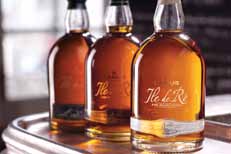 Craft Cognac: Camus’ Artisanal Approach
Craft Cognac: Camus’ Artisanal Approach
In a category heavily dominated by major houses, Camus stands out as a family-owned, independent producer focused on the high-end. But it’s not just their smaller size that sets them apart. Here’s why they are making their mark:
- Estate Vineyards: Having started as winegrowers (not merchants), Camus is the only producer in Cognac to own a large percentage of their own vineyards. “We’re the only house that can tell you where every grape came from,” shares president Cyril Camus.
- Site Specific Cognac: With newly acquired vineyard holdings in Cognac’s prized Borderies subregion, Camus has helped pioneer the concept of Cognac terroir. Their Borderies expressions— VSOP ($55) and XO ($180)—highlight the region’s hallmark floral and mineral character.
- Skewed Super-Premium: Camus sells more of their XO ($160) than their VS ($30)— unheard of in the Cognac world. Their much-awarded super-premium Borderies VSOP is their focus brand in the U.S.
- Lost Art, Rediscovered: In the 1970s, many traditional production methods were abandoned in Cognac. Camus has reintroduced ancient techniques like distilling
grapes on their lees which adds creaminess and texture, as well as extracting heads (portion of Cognac to discard) liter by liter. - Growth by Cocktail: On-premise is a growth-driver, as the brand helps reclaim Cognac’s rightful place at the bar. “Around one-third of classic cocktails were based on Cognac, and the cocktail craze is helping bring it back,” says Camus.
Eye on Experimentation
Consistency is everything with Cognac. Blending is an extremely precise art, where the blender might combine 3% from one barrel, 8% from another, 13% from another and so on just to achieve a flavor profile consistent with previous bottlings.
Many Cognac houses, however, have been experimenting a bit and offering expressions beyond the traditional VS, VSOP and XO labels with characteristics unique to that bottling—not unlike the “small batch” or “single barrel” concept in bourbon.
Cocktail Classic
Cognac as a cocktail driver may seem like a new phenomenon, but the spirit has been a player in cocktail manuals as long as recipes have been compiled and shared. Cognac is a very versatile cocktail base and there are many classics that wouldn’t be the same without it. In character, it also is being rediscovered by a new generation of mixologists for its ability to stand in for other spirits, particularly bourbon and amber rum.
- Vieux Carre: The New Orleans-born cocktail combines Cognac, rye whiskey, sweet vermouth and bitters.
- French 75: These days people are more familiar with the gin-based version, but the original used Cognac in the mix that also includes Champagne, lemon juice and simple syrup.
- Brandy Alexander: While any aged brandy would suffice, many bartenders prefer to use cognac in the drink that combines the spirit with creme de cacao, heavy cream and ice.
- Sidecar: The one most classic cocktail enthusiasts likely know best: Cognac, lemon juice, orange liqueur and sugar.
- Old Fashioned: You’re probably thinking, “Wait, you’ve got the wrong spirit! Bourbon or rye whiskey is the proper base for an Old Fashioned!” Well, yes and no. Back in the 19th century, folks were mixing cocktails with whatever they had;
and in a lot of cases—especially in the French Quarter of New Orleans—they
were very often mixing their cocktails with French brandy, which, more often than not, was the much-exported Cognac.
Meet the New Neat
When sipping fine Cognac, many professionals recommend avoiding those big balloon snifters. Warming Cognac (or any brandy) by cradling a snifter beside a roaring fire is little more than a cliché now. For optimal tasting, you are better off using an eight-ounce tulip glass; there’s less distance between your nose and the
spirit, so the smaller glasses are much more conducive to appreciating all of the
complexity of Cognac.
Are snifters history? Not quite yet. If you are look to industry pacesetters for clues,
Riedel makes Cognac glasses in both the tulip and balloon shapes; Ravenscroft and Schott Zwiesel opt for the snifter, albeit not fully bulbous.
Fun Facts
Now is the Time: The biggest month of the year in the U.S. for selling Cognac is December, when 12.5% of the annual Coganc purchases are made. In fact, a third of the Cognac we buy is sold in O-N-D. (Source: IWSR)
Good Wood: All Cognac must be aged for at least 30 months in French oak; although barrels from the Limousin and Tronçais forests in central France are both allowed, Limousin is the wood of choice, prized for its generous tannins.
The Big Squeeze: It takes 10 liters of white wine to distill 1 liter of Cognac.
Cognac Web Resources
- Cognac.fr: The official website of the Cognac Bureau, has a selection of detailed interactive presentations on Cognac history, production and usage.
- Cognacfans.com: Aptly name site is all about enjoying the drink. Established in 2009 and updated in 2011 with an extensive database of Cognacs, features forums as well.
- Cognac-expert.com: Blog, reference, marketplace. This is a labor of love by a brother and sister, based in Cognac.
Selling Points
- The whiskey renaissance has opened the door for other brown spirits. Consumers are seeking out new flavor experiences in that realm and Cognac has been one of the prime beneficiaries.
 Drinkers increasingly have become savvy about different types of oak treatments. Barrel type and aging length are key facets of Cognac’s flavor profile and an opportunity to attract new fans.
Drinkers increasingly have become savvy about different types of oak treatments. Barrel type and aging length are key facets of Cognac’s flavor profile and an opportunity to attract new fans.- There has also been a rise in interest in aperitifs and digestifs. Few classic after-dinner sips have as much history as Cognac.
Cognac By The Numbers
Over the past two decades, Cognac consumption in the U.S. has grown even faster than the overall brandy market, increasing its share significantly.
View, download and share the pdf of Back to Basics: Cognac 101

